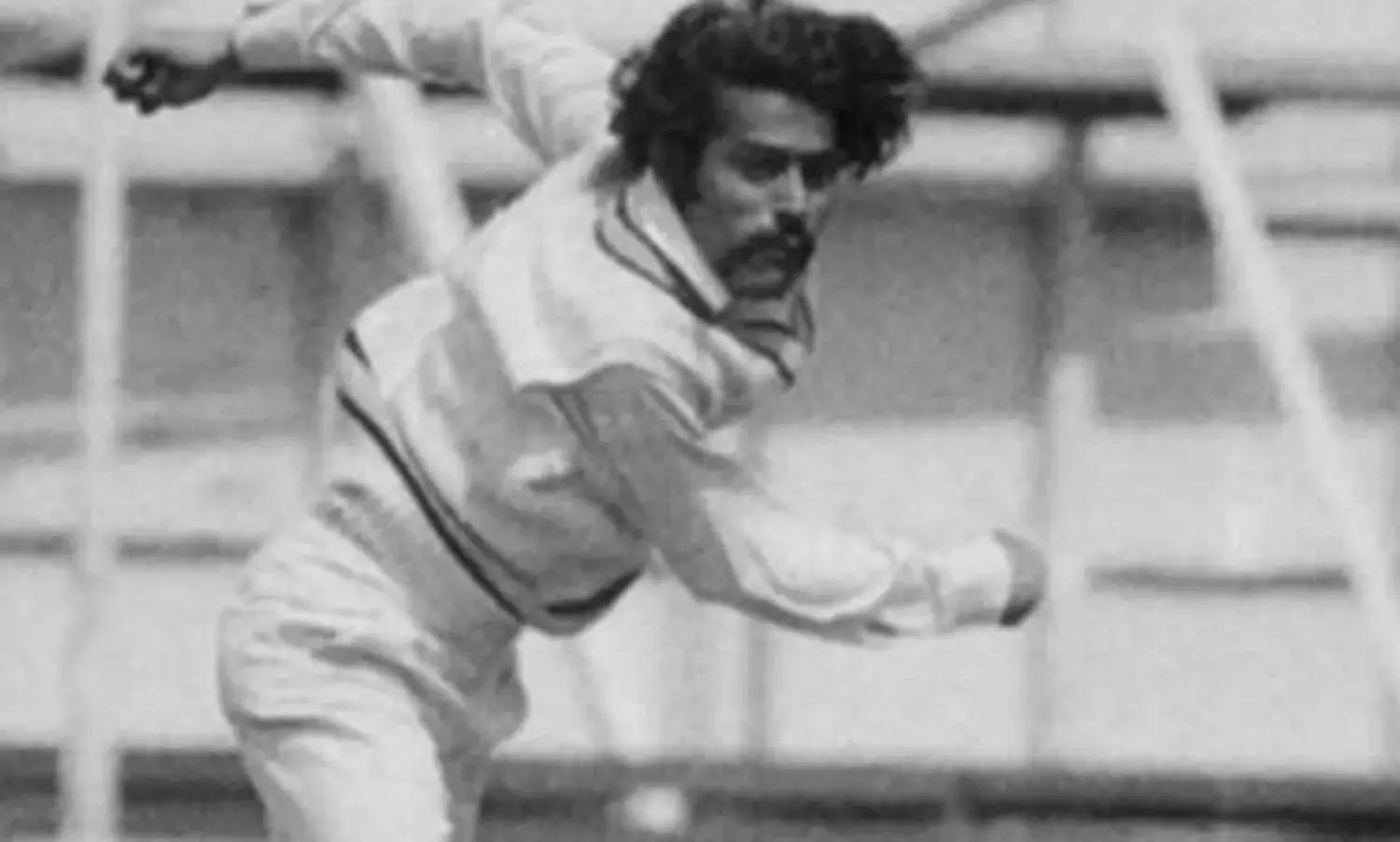Chandra’s Record Has Stood For 47 Years
Down Memory Lane

The twin triumphs in the West Indies and England in 1971 had whetted the appetite of cricket lovers in this country to an unimaginable degree and there was tremendous enthusiasm when England came over for a five-Test series in 1972-73. There were record crowds for all the matches and the question on everyone’s mind was whether India could complete a hat trick of triumphs. Everyone reckoned that for this unique feat to take place the spin quartet then at its peak would have to play a major role and the opponents being England much would depend on BS Chandrasekhar. For all the merits associated with Erapalli Prasanna, Bishen Bedi and S Venkatraghavan Chandra was clearly the ace in the pack. The spectators looked forward to his bewildering mix of leg spinners, googlies and top spinners bamboozling the visiting batsmen.
It was Chandra who was the architect of India’s famous triumph at the Oval in 1971 when with a spell of six for 38 he bowled out England for 101 to make it that much easier for the batsmen to chase down the victory target of 173. He had taken 75 wickets from 19 Tests when the series got underway at New Delhi and there was considerable discussion on whether he would reach the 100-wicket mark by the end of the series.
India were firm favourites to win the contest but they suffered a rude jolt when England pulled the rug from under their feet by winning the first Test by six wickets. The bowlers did their job but the batting let them down and no bowler performed more brilliantly than Chandra whose first innings figures of eight for 79 remained the best of his 58-Test career
The second Test at Calcutta was again a low scoring contest but this time the Indian spinners performed in exemplary fashion in defending totals of 210 and 155 mustered by the batsmen. They bowled out England for 174 and 163 and a narrow 28-run victory helped India to level the series. Chandra who had taken nine wickets at New Delhi again finished with nine wickets to put him within striking distance of 100 wickets as the third Test at Madras got underway.
With the batting repeatedly failing the pressure on the spinners was enormous and Prasanna and Bedi had supported Chandra admirably. The Madras Test was another low scoring game and India squeaked home by four wickets to go ahead in the series. England this time were restricted to totals of 242 and 159 with Chandra again among the wickets. He had six for 90 in the first innings and his lone scalp in the second innings gave him his 100th wicket in only his 22nd Test.
One landmark behind him Chandra was now the subject of much focus thanks to him nearing an Indian record for most wickets by an Indian bowler in a Test series. That stood jointly in the names of Vinoo Mankad and Subash Gupte who each had 34 wickets. Mankad had performed the feat against England in 1951-52 while Gupte had done so against New Zealand four years later. Could Chandra take ten wickets in the final two Tests to set a new record?
This proved to be really challenging for the batting finally started to come into its own on more docile pitches. In the fourth Test at Kanpur England captain Tony Lewis notched up the first hundred of the series and in the final Test at Bombay there were four centuries in all two each on either side.
Chandra however was not to be denied his record. He stayed in the hunt at Kanpur when in the only England innings he performed gallantly to take four wickets. That left him six short of the mark coming into Bombay and in the first innings despite England compiling 480 – the highest total of the series - on a batsman’s surface he finished with a five-wicket haul to equal the record. In a fairly high scoring game skipper Ajit Wadekar made a token declaration at tea on the final day but that one session was enough for Chandra to put his name in the record books. He bowled Alan Knott for his 35th wicket of the series. That was in February 1973 and the record still stands.



